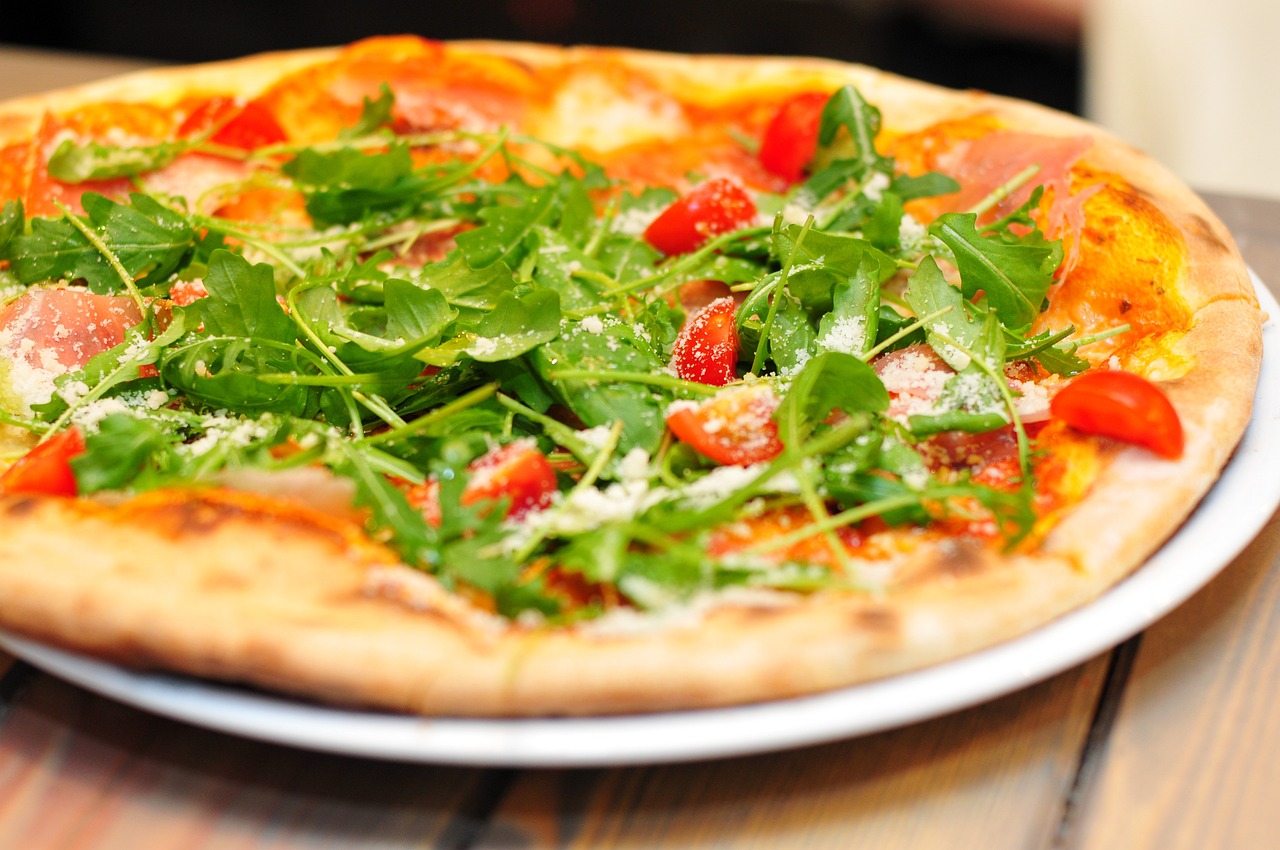If you are a pizza lover and enjoy exploring different styles of pizza, then Roman Pizza is a must-try for you. Known for its thin and crispy crust, authentic Roman Pizza offers a unique and delicious experience that sets it apart from other styles of pizza. Whether you prefer traditional Roman Pizza with classic toppings or want to try something new and innovative, there is a wide array of options to choose from.
In this blog, we will explore the best Roman Pizza restaurants, the most delicious recipes, and even how to make your own Roman Pizza at home. Get ready to tantalize your taste buds with the irresistible flavors of this iconic Italian dish.
Main Points
- Authentic Roman Pizza offers a unique and delicious experience with its thin and crispy crust.
- There is a wide array of options for traditional Roman Pizza toppings.
- We will explore the best Roman Pizza restaurants.
- We will also provide delicious Roman Pizza recipes and tips for making it at home.
The History of Roman Pizza
Roman pizza has a long and fascinating history that dates back to ancient times. The origins of this dish can be traced back to the ancient Roman civilization, where flatbreads were a staple food. Over the centuries, Roman pizza has evolved and transformed into the delicious and iconic dish it is today.
Authentic Roman Pizza
When it comes to authentic Roman pizza, there are a few key characteristics that set it apart from other styles of pizza:
- Thin crust: Roman pizza is known for its thin and crispy crust, which is often cooked in a wood-fired oven.
- Simple toppings: Unlike its American counterpart, Roman pizza typically features simple yet high-quality toppings such as fresh tomatoes, mozzarella cheese, and basil.
- Long fermentation: The dough for Roman pizza is typically fermented for an extended period, resulting in a light and airy crust with a depth of flavor.
Best Roman Pizza
There are countless pizzerias in Rome that claim to serve the best Roman pizza, but a few notable establishments stand out:
- Pizzarium: This renowned pizzeria is known for its innovative approach to Roman pizza, with a wide variety of creative toppings and flavor combinations.
- Da Remo: A classic Roman pizzeria that has been serving up traditional Roman pizza for decades, beloved by locals and visitors alike.
- Bonci Pizzarium: Another popular spot for Roman pizza, this pizzeria is famous for its rectangular slices and flavorful toppings.
Delicious Roman Pizza
Whether you’re enjoying a classic Margherita or a more adventurous flavor combination, one thing is for certain – Roman pizza is undeniably delicious. The perfect balance of crispy crust, flavorful toppings, and a touch of Roman culinary history make it a truly unforgettable dining experience.
The Ingredients That Make Roman Pizza Special
When it comes to traditional Roman Pizza, there are a few key ingredients that make it truly special. Whether you’re enjoying Roman Pizza delivery or trying your hand at a Roman Pizza recipe at home, these essential ingredients are what give this classic dish its unique flavor and texture.
The Dough
Roman Pizza starts with a simple dough made from flour, water, yeast, and salt. However, it’s the long fermentation process that sets Roman Pizza dough apart. This slow rise allows the dough to develop complex flavors and a light, airy texture that is characteristic of Roman Pizza.
The Sauce
Another key component of Roman Pizza is the sauce. Unlike the heavily seasoned sauces found in other pizza styles, Roman Pizza sauce is made from San Marzano tomatoes, which are known for their sweet and tangy flavor. The sauce is lightly seasoned with salt and olive oil, allowing the natural sweetness of the tomatoes to shine through.
The Toppings
When it comes to toppings, Roman Pizza keeps it simple. Classic Roman Pizza is often topped with just a few high-quality ingredients such as fresh mozzarella, basil, and a drizzle of olive oil. The emphasis is on letting the quality of the ingredients speak for themselves, rather than piling on excessive toppings.
| Dough | Sauce | Toppings |
|---|---|---|
| Flour, water, yeast, salt | San Marzano tomatoes, salt, olive oil | Fresh mozzarella, basil, olive oil |
Whether you’re enjoying a traditional Roman Pizza at a pizzeria in Rome or trying to recreate the flavors at home, these key ingredients are what make Roman Pizza truly special. From the perfectly fermented dough to the simple yet flavorful sauce and toppings, every element of Roman Pizza plays a crucial role in creating a one-of-a-kind culinary experience.
Traditional Techniques for Making Roman Pizza
When it comes to making authentic Roman pizza, traditional techniques are key. From the dough to the toppings, every step of the process has been perfected over centuries. Here, we’ll take a closer look at the traditional techniques for making Roman pizza.
Preparing the Dough
The first step in making Roman pizza is preparing the dough. Unlike Neapolitan pizza, which is known for its soft and chewy crust, Roman pizza has a thinner, crispier crust. The dough is typically made with a high-protein flour, water, yeast, and salt. It’s then left to rise for an extended period, resulting in a light and airy texture.
Stretching the Dough
Once the dough has risen, it’s time to stretch it into the characteristic thin, oval shape of Roman pizza. This is typically done by hand, using a careful stretching technique to avoid tearing the dough. The goal is to achieve a uniform thickness across the entire crust, resulting in a crispy yet tender base for the pizza.
Adding the Toppings
When it comes to toppings, Roman pizza is known for its simplicity. Classic toppings include fresh tomatoes, mozzarella cheese, fresh basil, and a drizzle of olive oil. While there is some room for creativity, it’s important to remember that less is more when it comes to Roman pizza. The focus should be on the quality of the ingredients rather than an abundance of toppings.
In conclusion, the key to making authentic Roman pizza lies in honoring the traditional techniques that have been passed down through generations. From the preparation of the dough to the simplicity of the toppings, each step plays a crucial role in creating the perfect Roman pizza.
The Influence of Roman Cuisine on Pizza Making
When it comes to the history of pizza, it is impossible to overlook the profound influence of Roman cuisine on the development of this beloved dish. The ancient Romans played a significant role in shaping the culinary traditions that eventually led to the creation of modern pizza.
The Roots of Roman Cuisine
Roman cuisine was characterized by its use of simple, yet flavorful ingredients such as olive oil, garlic, and herbs. These ingredients formed the basis of many Roman dishes, including the forerunners of the modern pizza.
The Birth of Pizza
One of the earliest examples of Roman influence on pizza can be seen in the ancient dish known as plakous. This flatbread was topped with olive oil, garlic, and cheese, strikingly similar to the pizzas we enjoy today.
The Evolution of Pizza Making
As Roman culinary traditions spread throughout the Mediterranean region, the concept of flatbread topped with various ingredients began to take on regional variations. In Italy, the addition of tomatoes, a New World ingredient brought back to Europe by explorers, transformed the dish into the pizza we know and love.
Legacy of Roman Influence
The enduring legacy of Roman cuisine can be seen in every slice of pizza enjoyed around the world. From the use of simple, fresh ingredients to the emphasis on bold flavors, the influence of ancient Roman cooking is unmistakable.
In conclusion, the roots of pizza can be traced back to the culinary traditions of ancient Rome. The use of olive oil, garlic, and cheese in Roman dishes laid the foundation for the creation of pizza, and its legacy continues to shape the way we enjoy this iconic dish today.
Exploring Different Varieties of Roman Pizza
When it comes to pizza, the Roman style offers a wide variety of delicious options that cater to different tastes and preferences. From the classic Margherita to the more adventurous Carbonara, Roman pizza has something for everyone. In this article, we will explore some of the most popular varieties of Roman pizza and what sets them apart.
1. Margherita
The Margherita pizza is a classic Roman staple, known for its simplicity and fresh flavors. Made with San Marzano tomatoes, mozzarella cheese, fresh basil, and a drizzle of olive oil, this pizza highlights the quality of its ingredients. The tomato sauce provides a perfect balance to the creamy mozzarella, while the basil adds a refreshing touch. The Margherita is a timeless favorite for those who appreciate traditional Italian flavors.
2. Marinara
For those who prefer a simpler pizza without cheese, the Marinara is the perfect choice. This pizza is topped with a tangy tomato sauce, garlic, oregano, and a hint of olive oil. Despite its minimal toppings, the Marinara is bursting with flavor and is a great option for vegetarians. The absence of cheese allows the tangy tomato sauce to take center stage, making it a refreshing and light option.
3. Carbonara
For a more indulgent and decadent option, the Carbonara pizza is a must-try. Inspired by the classic pasta dish, this pizza features a creamy white sauce, pancetta or bacon, pecorino cheese, and a sprinkle of black pepper. The richness of the sauce combined with the saltiness of the pancetta creates a flavor explosion that is sure to satisfy any craving for comfort food. The Carbonara pizza offers a unique twist on traditional Roman flavors.
Whether you prefer the simplicity of the Margherita, the tanginess of the Marinara, or the indulgence of the Carbonara, Roman pizza has something to offer every pizza lover. Each variety showcases the versatility and creativity of Italian cuisine, making it a delight for food enthusiasts around the world.
In conclusion, Roman Pizza offers a unique dining experience with its thin crust and fresh, high-quality ingredients. Whether you are a local or a tourist, trying out Roman Pizza is a must-do when visiting Rome. The blend of traditional flavors and modern twists makes Roman Pizza a standout dish in the culinary world. So, next time you find yourself in the eternal city, be sure to indulge in a slice of authentic Roman Pizza.
Frequently Asked Questions
What is unique about Roman pizza?
Roman pizza is known for its thin, crispy crust and unique rectangular shape.
What are the traditional toppings for Roman pizza?
Traditional toppings for Roman pizza include local cheeses, herbs, and seasonal vegetables.
Is Roman pizza the same as Neapolitan pizza?
No, Roman pizza is different from Neapolitan pizza. It has a different crust and toppings.
How is Roman pizza dough made?
Roman pizza dough is typically made with high-protein flour, water, yeast, and salt.
What are some popular Roman pizza variations?
Popular Roman pizza variations include the classic Margherita, Marinara, and bianca (white) pizzas.
Is Roman pizza gluten-free?
There are gluten-free options for Roman pizza available, but traditional Roman pizza is made with wheat flour.
Is Roman pizza suitable for vegetarians?
Yes, Roman pizza can be a great option for vegetarians with its variety of vegetable toppings and cheeses.
How is Roman pizza traditionally served?
Roman pizza is often sold by weight and served in rectangular slices.
What are some common accompaniments to Roman pizza?
Common accompaniments to Roman pizza include a variety of Italian antipasti, salads, and wine.
Can you reheat Roman pizza?
Yes, you can reheat Roman pizza in the oven or a skillet for a crispy texture.
















0 Comment